Camping is a popular form of outdoor recreation. Various types of camping provide opportunities throughout the year for people to share low-cost outdoor experiences in a natural environment. Camping trips range from spending the night in a tent in one’s backyard to passing several weeks in the wilderness. Campers may visit forests, prairies, deserts, lakes, or mountains.

Some campers remain at one campsite for their entire trip. From this site they visit tourist attractions, participate in water sports, or just relax. They may also spend time in such popular outdoor activities as bird watching, fishing, rock collecting, photography, and hiking.
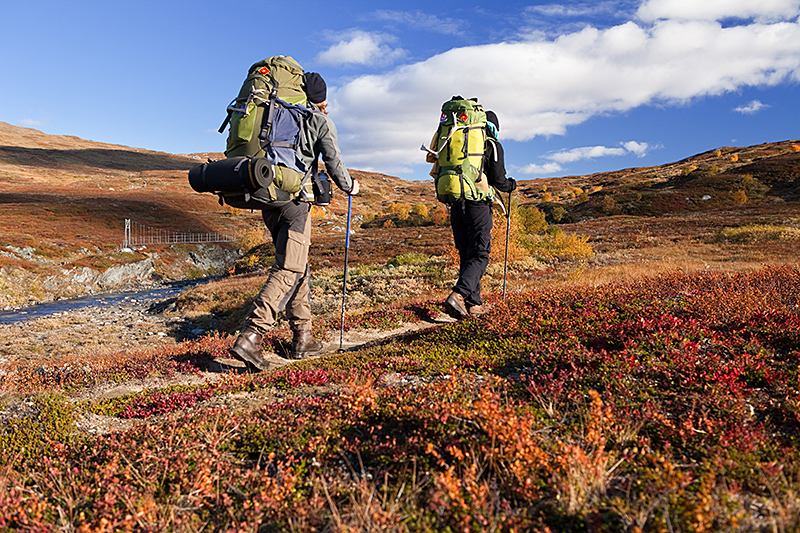
Many campers prefer to move from place to place each day in motor vehicles. They usually start early in the morning and select a new campsite by early afternoon. Such campers often tour state or provincial parks, national parks, national monuments, and historic sites.
Some campers prefer to “travel light,” carrying all their equipment in backpacks, in canoes, or on bicycles. Usually these campers travel fewer miles than other campers, but they enjoy a more intimate relationship with areas they visit. Most of their activities consist of getting from place to place, enjoying the area, and preparing meals.
Types of camping
Tent camping
is the most popular type of camping and also one of the least expensive. Tents come in many sizes, shapes, and colors. Some tents can hold only one person, but several people can live comfortably in a large tent. Modern tents are made of lightweight materials and are easy to erect, even by beginning campers. The light weight of many modern tents allows campers to carry them in packs almost anywhere.
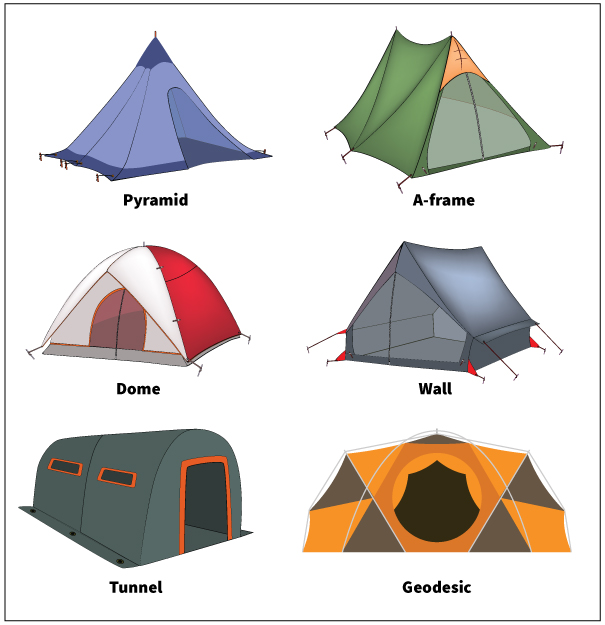
Recreational vehicle camping
is also popular. A recreational vehicle (RV) is a motor vehicle that provides living quarters for campers. RV’s range from small, collapsible trailers to large motor homes with most of the conveniences of permanent homes. For example, many recreational vehicles provide refrigerators and stoves for easy food preparation, showers, and restroom facilities. Most RV’s also contain storage tanks for wastewater and sewage.
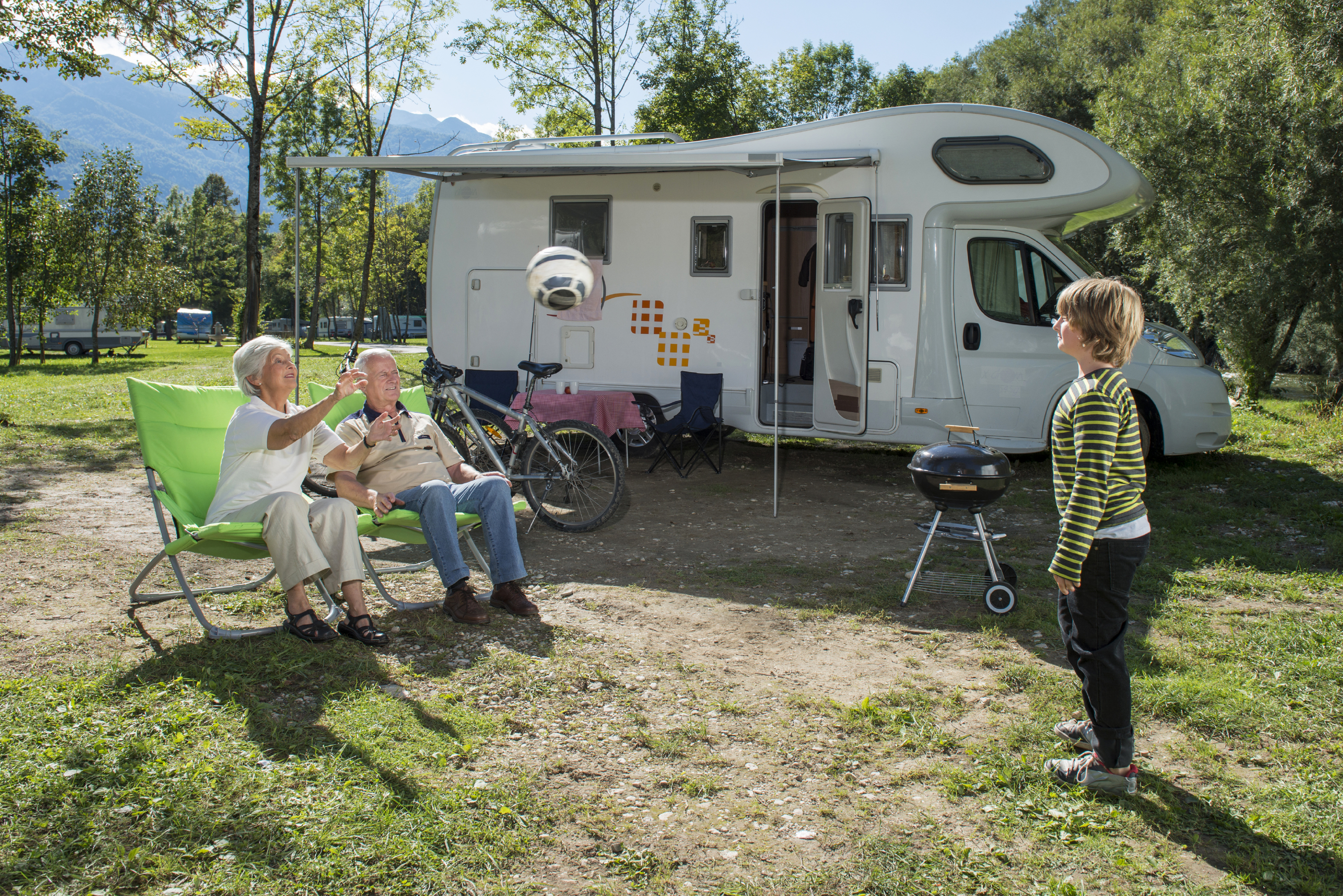
Numerous North American campgrounds provide electricity and water hookups to serve RV’s. Many campers use their RV as a base camp while they explore the countryside by foot, bicycle, motorcycle, or automobile. They return to the RV for meals and to sleep.
Planning a camping trip
Campers should plan trips far enough in advance to learn about campgrounds and make reservations if necessary. Bookstores and sporting goods stores sell guides that list campgrounds, and reference sources in libraries and on the Internet contain information about places to camp. State and provincial tourism bureaus and local chambers of commerce provide maps and other camping information. Local park and recreation agencies usually have information about local campgrounds and camping areas.
At campgrounds that operate on a first-come, first-served basis, arriving in the morning is best. However, many campgrounds require reservations, especially during the busy summer season. Most campgrounds charge a small fee for the use of the site. There are additional charges for sites with extra facilities such as electrical hookups and showers. Permits are usually required to camp in remote parts of national parks or wilderness areas. Campers can obtain permits from the area’s ranger.
The information in the following sections refers to tent camping, but it generally applies to most other types of camping.
Camping equipment and food
A broad range of camping equipment is available, but people need not take a large amount of gear to have an enjoyable camping trip. Different types of camping may require different things. Beginners often make the mistake of taking more equipment than they need. New campers should start out with a few essential items of high quality. They will learn from experience what additional items would be useful.
Tents
today are made of various fabrics, but the most popular is nylon. Before synthetic fabrics such as nylon and polyester were invented, cotton canvas tents were used. The newer fabrics supply strength, fireproofing, waterproofing, and adequate ventilation. Modern tents come in different styles designed to serve specific purposes. For example, backpackers need a small and lightweight one-person tent—2 to 3 pounds (1 kilogram)—or a two-person tent weighing 4 to 6 pounds (2 kilograms). For family camping, tents must be roomy enough to provide comfortable shelter for a group. Some large tents include dining areas and have storage pockets in the walls. This kind of tent is heavier and more difficult to set up.
Before buying a tent, ask for a demonstration to make sure it is easy to erect. Also make sure the tent is well-constructed, and that all the parts are included.
Sleeping bags
are warmer and easier to carry than blankets. A sleeping bag provides efficient insulation to keep campers warm. Goose or duck down (soft feathers) is the most effective lightweight insulating material that compresses easily. Several synthetic fabrics insulate nearly as well as down and provide better insulation when wet than wet down does. Synthetic bags also cost less and last longer. In addition, synthetic insulation is easier to clean, and it dries faster than down. The insulation is enclosed in outside coverings made of strong, lightweight fabrics, such as nylon, polyester, and taffeta.
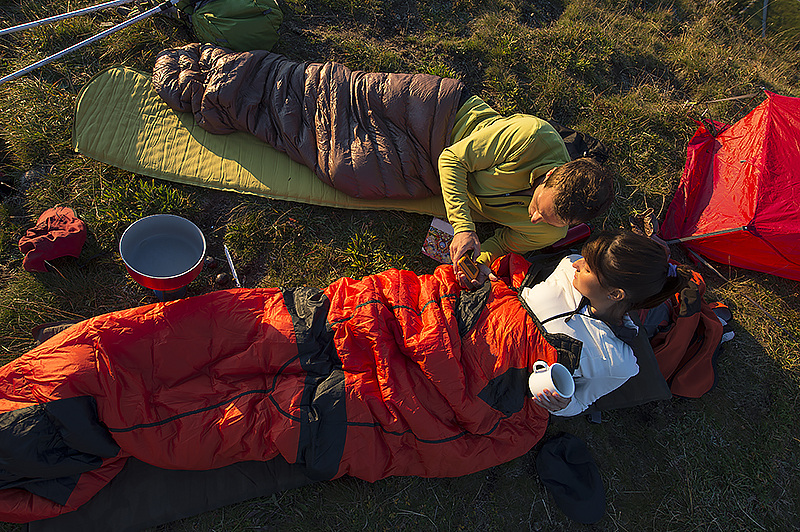
Sleeping bags come in three shapes: (1) mummy, which hugs the body and becomes narrow at the bottom; (2) tapered rectangular, which is similar to the mummy shape but wider; and (3) rectangular. Mummy bags furnish the most warmth, but they limit movement. This lightweight type of sleeping bag, often insulated with down, is usually best for backpacking. Mummy bags are also popular for winter camping and for camping at high elevations. Tapered rectangular bags are designed mainly for the same uses as mummy bags. Tapered bags usually do not provide enough heat for extremely cold temperatures, but they allow more movement. Rectangular bags do not insulate as effectively as the other two, but they are the most comfortable. A rectangular bag with synthetic insulation is probably the best choice for the average camper.
Regardless of the style or quality of a sleeping bag, a camper needs additional insulation between the bag and the ground. A ground cloth or tarpaulin (piece of canvas or plastic) serves this purpose. Campers may also use the ground cloth as a wrap for gear, as a windbreak, or as a shelter. A sleeping pad, foam pad, or inflatable air mattress can provide insulation and cushioning for added comfort.
Clothing
for camping trips should protect against wind, rain, sun, cold, and insects. The clothing must be sturdy enough to withstand hard wear and weather extremes. The amount needed depends on the temperature, length of the trip, and whether the clothing will be laundered.
Layering is the best way to dress for camping. It allows a camper to make adjustments based on activity level and changes in the weather. The base layer, against the skin, manages moisture. The insulating layer protects from the cold. The shell layer protects from wind and rain. Layers are added or subtracted as needed.
For warm weather, pack at least two pairs of lightweight trousers, as well as comfortable shorts, shirts, and a hat with a wide brim. A warm shirt or jacket should be included for cool evenings and on visits to high elevations. For colder weather, bring wool shirts and trousers or synthetic or down jackets. Wet blue jeans take a long time to dry and do not provide insulation when wet, so avoid wearing them in snowy or rainy weather. A down or synthetic vest and windproof outer parka provide protection against cold wind without restricting movement. Many new outdoor clothing products come on the market each year.
Hiking boots are recommended for hikes in rougher terrain. Hiking boots are typically grouped into four types: (1) lightweight hiking, for day trips; (2) hiking, for day hikes during weekend trips; (3) backpacking, designed for carrying heavier loads; and (4) mountaineering, for heavy loads over a longer period of time. Lighter hiking boots are generally made of synthetics, such as nylon, and are the most popular. The most important aspect of any hiking boot is fit. The socks worn with boots should provide comfort and warmth as needed.
Food and water.
Campers can prepare a great variety of food with the help of portable stoves and ovens and insulated coolers. Each person should have a mess kit, which includes eating utensils. Many campers bring freeze-dried foods, which are prepared with boiling water, for fast cooking. Some campers plan meals in advance and organize the food in labeled plastic bags.

It is important to select nutritional foods that emphasize such items as grains, fruits, vegetables, milk, and meat or beans. Some good foods for camping include peanut butter, cheese, pancakes, bacon, and nuts. Buy canned and freeze-dried foods before the trip. When possible, buy fresh and frozen foods during the trip.
If you are not sure the water will be safe to drink, bring water from home. Additional water should come from an approved source, such as a campground well. Lakes and streams may look, smell, and taste clean but still be contaminated with disease-causing microscopic organisms. If water must be taken from a questionable source, it should be treated either by boiling, by using chemical disinfectants such as iodine or chlorine, by water filtration, or by ultraviolet lighting.
Other camp supplies
may be necessary for most camping trips. They include a small ax for splitting firewood, and such basic items as a hammer, screwdriver, pliers, flashlight, spade, hunting knife, rope, paper towels, matches in a waterproof container, and extra batteries. In addition, at least one camper in the group should carry a complete first-aid kit. Maps, GPS devices, or both are also important, especially for the first visit to an area. Carry a compass at all times, no matter how familiar the area. A large backpack, properly fitted, is necessary for overnight hikes away from the base camp. For shorter hikes, use a smaller pack to carry such items as food, water, maps, and a camera. Duffel bags can also hold clothing and other equipment. Packs called portage packs or Duluth packs are used for canoe camping.

The campsite
Selecting a location.
Many campgrounds rent reserved campsites. Such campsites normally include a picnic table, charcoal grill or fireplace, and a suitable place for a tent. Some campgrounds have tenting areas with rest rooms and a convenient water supply.
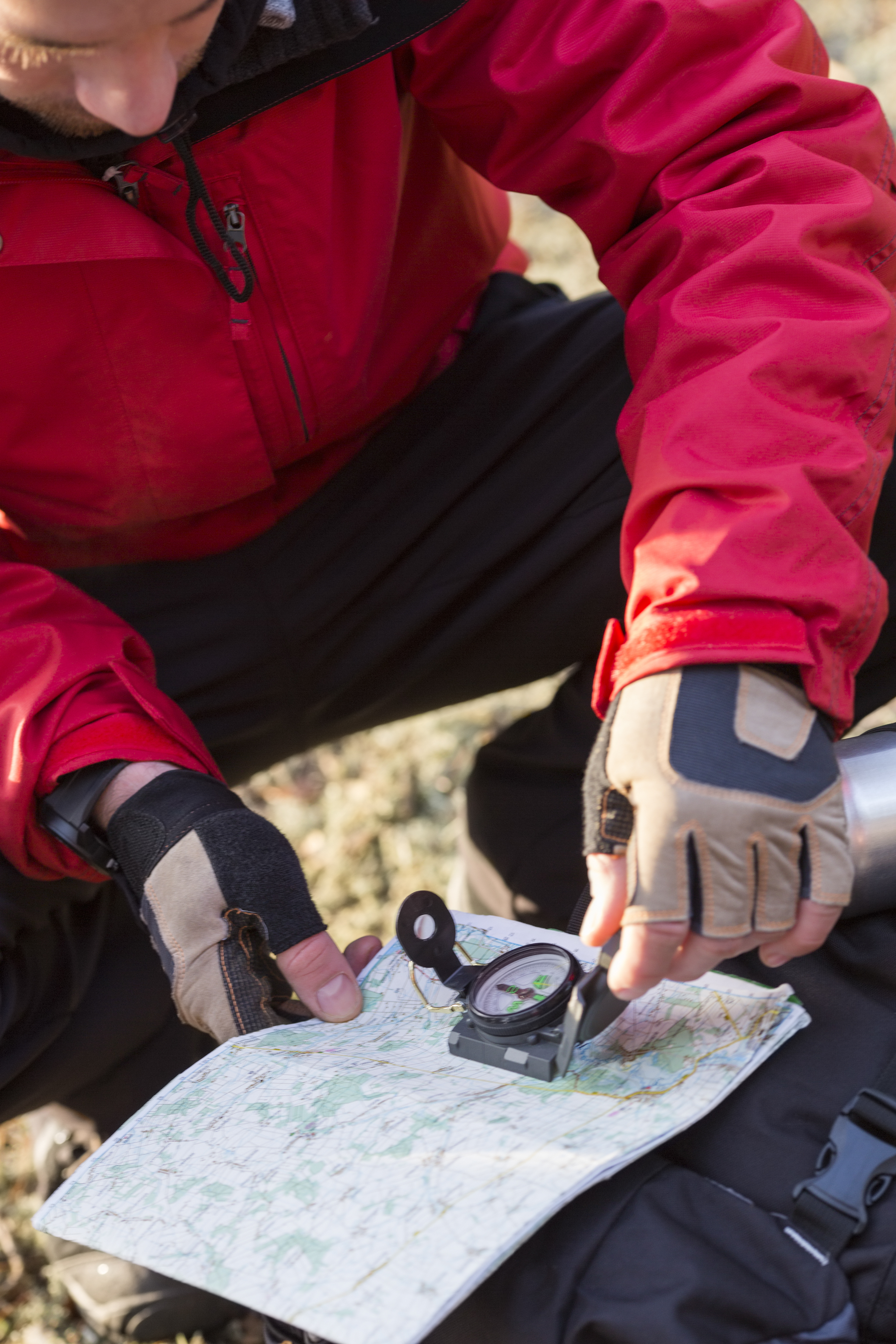
Other locations, such as wilderness areas and forest preserves, do not have reserved campsites. Campers should follow a number of rules in selecting their sites. Look for a site on high, level ground that is uncluttered and sheltered from the wind. Durable surfaces include established campsites, rock, gravel, dry grasses, or snow. The campsite should be at least 200 feet (50 meters) from hiking trails, scenic attractions, and water. This distance helps preserve the area’s beauty and the water’s purity. Also, land next to water is usually low, damp, and a breeding place for insects. The tent should be pitched on sandy soil that is firm enough to hold the tent stakes securely but still provide good drainage. Always try to avoid disturbing or damaging plant life. Rangers can usually suggest locations to set up camp.
Building a campfire.
Natural wood supplies are being rapidly used up in many areas, so some campgrounds sell firewood, and some campers bring wood with them. Regulations in some areas prohibit open fires , and other areas require the use of stoves only.
Before building a fire, make certain it will not harm the surroundings. Campfires should be built only when permitted and should be kept small. Avoid building fires on windy days. Keep fires small, regularly removing ashes. Someone should be responsible for watching the fire at all times. A bucket of water and a small shovel should be available whenever a fire is built, to control the fire if it threatens to spread.
Three types of materials are needed to build a campfire: (1) tinder, (2) kindling, and (3) firewood. Tinder includes dry twigs, pine needles, leaves, and similar materials that ignite quickly. Kindling consists of larger pieces of wood that burn easily and rapidly. Softwoods, such as cedar or pine, make effective kindling. Firewood consists of woods that burn slowly and evenly and produce a bed of long-lasting coals. Hickory, oak, and sugar maple are examples of woods suitable for campfires.
Small fires can be built in several effective ways. The following method can be used to build a fire for cooking, for warmth, or simply for enjoyment. First, place a small pile of tinder on the ground and arrange kindling around it in the shape of a cone. Then enclose the cone with four pieces of firewood that form a square. Soon after the tinder is lit, the kindling will begin to burn. Gradually, add firewood to keep the fire burning. To start a fire in wet weather, find dry materials. Paper milk cartons and wadded paper can serve as tinder, and dry wood can sometimes be found under logs and trees. Damp logs should be split because the inside of a log stays dry longer in wet weather.
Make sure a fire is out before leaving the campsite. To extinguish a fire, first spread the coals out until they lose their red glow. Then sprinkle water on the dead coals and dump soil over them. Next, stir the mixture, scatter it on the ground, and cover it with fresh topsoil. In areas without designated fire pits, no trace of the campfire should remain.
Camping safety and courtesy
Safety.
Common sense can prevent most camping problems. For example, children should never be allowed to use axes or knives, and anyone who is cooking should use gloves and potholders. However, campers must take special precautions to protect against such hazards as poisonous plants, improper food storage, lightning storms, encounters with animals, and hiking emergencies.
Poisonous plants.
Because many camping trips take place in the forest, campers should learn to identify poison sumac, poison oak, and poison ivy. If contact occurs, wash the affected skin immediately with soap and water. Then apply a lotion that soothes itching.
Improper food storage.
Food poisoning can result from lack of refrigeration. Some campers avoid this danger by carrying only freeze-dried foods. Others store all their food in large coolers. Campers with small coolers often pack nonperishable foods separately in airtight containers. The smell of food can attract animals, so never leave food carelessly out in the open or store it in a tent.
Lightning storms
occur more frequently than other types of dangerous weather, and they can take place in any sort of climate or terrain. Immediately seek shelter during a lightning storm. If shelter is not available, sit under trees of similar height. Avoid tall trees in open areas and exposed slopes and hilltops. In addition, get out of water and onto land at the first sign of lightning.
Animal viewing
is a growing reason why some people want to camp, but close animal encounters can be dangerous. Many animals have become used to humans and appear to be friendly. Campers should consider several precautions. First, animals should never be fed. Most human food disrupts their digestive systems and may mean that they lose the ability to hunt or gather their own food. Second, animals should be given their space, so avoid getting too close. Be especially concerned about getting too close to baby animals, as their mothers are highly protective. Leave baby animals alone. Be especially wary of getting too close to big animals. Keep your distance. Third, hiking in groups is usually the safest way to avoid unwanted animal encounters.
Hiking safety.
Before leaving for a hike, tell your destination and expected length of the hike to someone who will not be hiking. If the terrain is unfamiliar, do not hike alone. Carry emergency supplies such as waterproof matches and extra food and clothing. If you get lost, keep calm, remain in one place, and wait for a search party to arrive. At night, build a fire for warmth and protection and to signal others. Leave the area only as a last resort.
Courtesy.
While camping, always try to preserve the natural environment. Besides eliminating campfire remains and leaving wildlife undisturbed, save trash until it can be properly discarded. Bury human waste if no rest rooms are available. Out of respect for animals and neighboring campers, keep as quiet as possible.
Structured camp experiences
Many organized or supervised camp experiences are available in North America, and increasingly, throughout the world. The benefits of organized camps include programs that involve group living opportunities, working with a trained and well-qualified staff, and focusing on the natural environment in an outdoor setting.

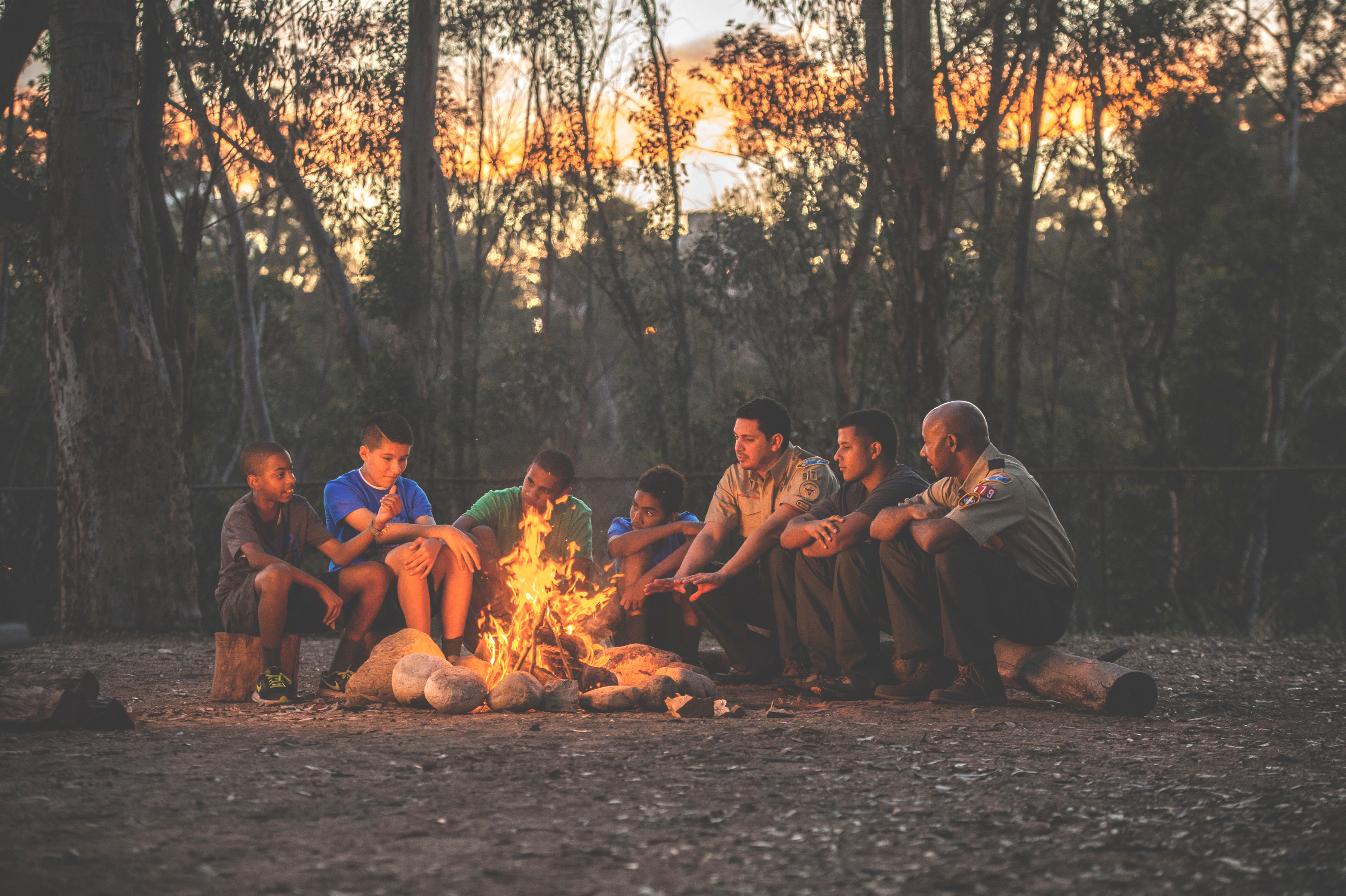
Organized camps provide supervised activities for groups that consist mainly of children and youths but also for family and adult groups. Most camps operate in the summer, but many are open year-round. These camps may be sponsored by such organizations or agencies as the Boy Scouts, Girl Scouts, Camp Fire, Young Men’s Christian Association (YMCA), and Young Women’s Christian Association (YWCA). There are also hundreds of private summer or independent camps throughout the United States, Canada, Australia, and other countries of the world. Camps affiliated with religious organizations are common. A growing number of local governments sponsor day camps through their community parks and recreation departments.
Specialty camps combine camping activities with a special activity such as tennis, music, or computer instruction. Specialty camps may also be designed for certain groups, such as people with disabilities or certain health problems, elderly people, and underprivileged children.
School camping combines educational programs with camping during the school year. A group of students spend several days, normally at a private camp, learning about the outdoors. Attendance at school camps is usually voluntary, and the school district pays part of the cost of the trip.
There is a growing trend to use camps the year around. These camp experiences frequently attract adults as well as children. The American Camp Association (ACA), a community of camp professionals, is available to share its knowledge and experience to ensure the quality of camping. The ACA accredits hundreds of camps in the United States that meet standards in health, safety, and program quality. Similar services are provided by the Canadian Camping Association, the Australian Camps Association, and camping associations in a number of other nations.
